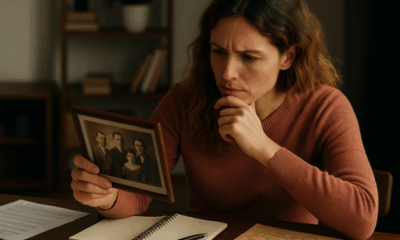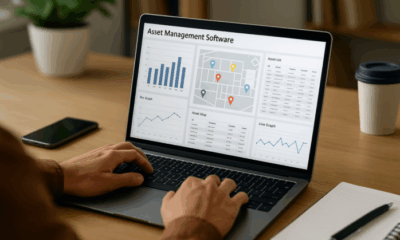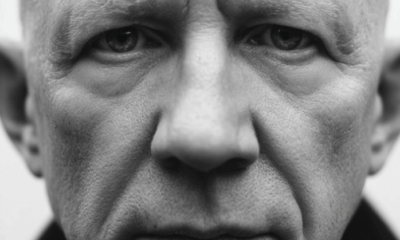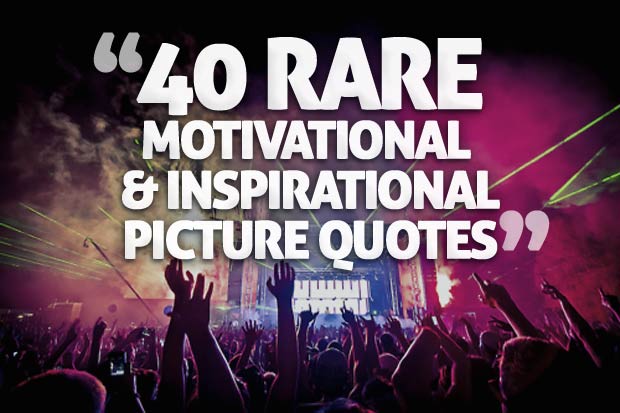Success Advice
Copyright Tips Every Small Business Owner Needs to Know
Understand what can be copyrighted, how to use the copyright symbol, and steps to ensure your intellectual property is safeguarded.

The concept of copyrighting exists to protect the original work that a person or business has created. As a small business owner, understanding copyright law is essential, as you strive to safeguard your material and ensure you don’t incorrectly use material that belongs to someone else.
In this article, small business experts and company formation agent, 1st Formations, look at what small business owners need to know about copyright laws. Let’s get started.
What does it mean if something is copyrighted?
If a piece of work is copyrighted, you can’t do any of the below to that work without approval from the copyright holder (this is often the person who created the work but not always):
- Copy
- Distribute
- Loan
- Lend
- Adapt
- Publish on the internet
An individual who performs any of these could be committing copyright infringement.
This can be a criminal offence if completed deliberately on a commercial scale. If done on a smaller scale, it’s categorised as a ‘private right’, and so the copyright holder can generally decide how the matter is handled.
For example, they may choose to simply contact the individual and request that they stop, or they could make it a legal matter which typically would start by sending a cease and desist notice.
What can be copyrighted?
Different types of work you do are protected through copyright. As set out by GOV.UK, protection is given to:
- Literature you have written including web content, blog posts, case studies, reports and research
- Software you have built
- Databases you maintain
- Illustrations you have created
- Photographs you have taken
- Art you have made including music, pictures, and theatrical drama
- Film, TV, and sound that you have recorded
How are copyright and intellectual property (IP) connected?
Intellectual property is the term used to describe something that you have created with your imagination. Inventions, product names, designs, logos, written content – these are all considered IPs.
Copyright is a form of IP protection, specific to particular IPs (covered above in ‘What can be copyrighted?’).
Other forms of protection include registering a trade mark, registering a design, and patenting an invention. These, in turn, are suitable for other types of IP.
For example:
- Registering a trade mark would be appropriate if you want to protect a product’s name
- Registering a design would be appropriate if you want to protect a product’s packaging
- Patenting would be appropriate if you want to protect a product
How do I copyright something?
You don’t have to do anything to copyright a piece of work. It is done automatically.
There is no application process involved and no fee that you need to pay. Copyright is obtained as soon as something has been made. In comparison, registering a trade mark, registering a design, and patenting an invention all require an application process and a fee.
Some people choose to use the copyright symbol, ©, on their work, alongside their name and the date that the work was created. Displaying the symbol and accompanying information is not a legal requirement – work has copyright status whether you choose to show it or not and this doesn’t provide it with an extra level of protection.
However, using the symbol demonstrates that you are laying claim to the work and can act as a deterrent if someone were to consider using it wrongfully.
The matter is complicated somewhat by ‘fair dealing’. In the UK, copyright law is set out in the Copyright, Designs and Patents Act 1988. This states that there are instances where it can be acceptable to replicate someone else’s work for ‘Criticism, review, quotation and news reporting’, provided that the work is publicly available and ‘sufficient acknowledgement’ is given.
However, this is a complex issue. If you are considering working with content that someone else has authored, we strongly recommend seeking legal advice first to ensure that your perceived fair usage isn’t copyright infringement.
Do employers or employees own copyright?
Generally speaking, a person is the ‘first owner of the copyright’ unless the work was completed upon the request of an employer. A person who has commissioned the work is not considered an employer.
- If an individual independently creates a piece of art they are the owner of the copyright.
- If the artist was commissioned to create the art they would still be the copyright owner.
- If the artist was an employee, creating the art upon the request of an employer, the employer is the owner of the copyright.
- This is all superseded if there is a written agreement in place between all parties involved that states otherwise.
More than one person can own the copyright. If the project results in an undividable whole, where the collaboration is equal and no prior agreement is in place, each party would be considered a joint owner (unless the work was completed by employees under the direction of an employer, in which case the employer would hold the copyright). When this occurs, if someone else wishes to use the copyrighted piece of work, all joint owners would need to agree.
Where a piece of work can be split into clear parts and different people complete work on different things, copyright can be attributed separately to the different parts. For example, a book may have a writer and an illustrator, each owning the copyright to their specific work (when a publisher is involved, they typically will have been licenced to use the copyrights). They can then allow other people to use their separate work how they see fit.
Ramifications of copyright infringement
Failure to effectively enforce your copyright can be damaging to your business. For example, other people – perhaps direct competitors – may be passing your work off as their own and being financially rewarded for it. This dilutes your work and cheats you out of potential earnings.
Furthermore, the integrity of what you have created could be sullied, as it may be being used in a way that you never intended. For example, perhaps some written content that you have produced is being reproduced in a way that removes context and changes the meaning to something that you disagree with.
If the scenario is switched and you break copyright law, the implications can be more immediate. In the case of a civil claim, you may be required to pay damages to the person whose work you have wrongfully used. In more severe situations, when cases reach court, you could end up paying a significant fine and even face a jail term.
What small business owners need to do
Demonstrate that you and your business take copyright seriously by correctly using the © symbol, with the name of the author and the date on all the work you produce that can be copyrighted.
If the other forms of IP protection are pertinent, take advantage of these.
Use watermarks on written and visual content when appropriate, which at the very least, ensures you’re provided with credit if it is used surreptitiously.
Set up Google Alerts on words and phrases commonly associated with your brand, so you can check new written content as and when it’s published, allowing you to act quickly if you do find your work is being used by someone else.
Disable copy functionality on your site, making life that much harder for people who do want to use your content illegitimately.
When you are commissioning a piece of work by a third party, make sure the initial discussion includes the issue of ownership and copyright, and these are cemented through a signed agreement. This will help you avoid disputes further down the line.
And, vitally, you need to act when you find that your copyright is being infringed upon. Exactly what you do will depend on the severity of the infringement. Maybe a short email requesting a credit will suffice, perhaps you feel that payment for usage is necessary, or legal action may be suitable.
When it comes to the steps required to make sure you don’t encroach on someone else’s copyright, advice is more concise.
If you can’t use original imagery, use stock photo services, always being sure to check what you can and can’t do in regard to the image.
If you want to include someone else’s work within a piece of written content (even if it’s just a link to the work), check the terms and conditions of the author, looking at what they do and don’t allow. If in doubt, contact them directly.
Unfortunately, there’s no database in the UK for checking copyrights and ownerships, so if you’re unsure whether you can use something, we urge you to seek legal assistance before publishing anything that could put your business at risk.
Do you want to set up a UK limited company? 1st Formations are a top-rated company formation agent in the UK, and can help you register your company in four simple steps – from just £12.99. Choose a suitable company name, pick a company formation package, make payment, and then complete the quick online application form. Companies are often formed in only 3 – 6 working hours, meaning that you could be ready to trade on the same day.
Did You Know
How Skilled Migrants Are Building Successful Careers After Moving Countries
Behind every successful skilled migrant career is a mix of resilience, strategy, and navigating systems built for locals.

Moving to a new country for work is exciting, but it can also be unnerving. Skilled migrants leave behind familiar systems, networks, and support to pursue better job opportunities and a better future for their families. (more…)
Life
10 Research-Backed Steps to Create Real Change This New Year
This New Year could finally be the one where you break old patterns and create real, lasting change.

Every New Year, we make plans and set goals, but often repeat old patterns. (more…)
Change Your Mindset
The Silent Skill That Makes People Respect You Instantly
What truly earns respect and why most people go about it the wrong way

Everybody craves respect but not everyone earns it. Some people believe that a title, years of experience, or a position of authority automatically entitles them to respect. (more…)
Entrepreneurs
The Essential Skills Every Entrepreneur Needs In 2026
Success in the digital age isn’t about luck. It’s about mastering the skills that separate dreamers from doers.

When I was 22 years old, I started my first side hustle as a ghostwriter. (more…)
-

 Business4 weeks ago
Business4 weeks agoWhy Your E-Commerce Fulfilment Is Probably Broken (And How to Fix It)
-

 Shift Your Mindset4 weeks ago
Shift Your Mindset4 weeks ago11 E’s That Define Every Great Leader And Why Most People Miss Them
-

 Did You Know3 weeks ago
Did You Know3 weeks agoThe Success Patterns You Inherited (And Didn’t Notice)
-

 Entrepreneurs2 weeks ago
Entrepreneurs2 weeks agoThe Essential Skills Every Entrepreneur Needs In 2026
-

 Business3 weeks ago
Business3 weeks agoThe Hidden Money Pit in Your Operations (and How to Use It)
-

 Change Your Mindset2 weeks ago
Change Your Mindset2 weeks agoHow to Turn Your Mind Into Your Greatest Asset (Instead of Your Enemy)
-

 Change Your Mindset2 weeks ago
Change Your Mindset2 weeks agoThe Silent Skill That Makes People Respect You Instantly
-

 Life1 week ago
Life1 week ago10 Research-Backed Steps to Create Real Change This New Year














